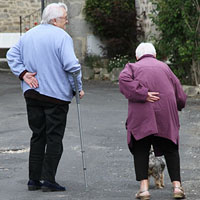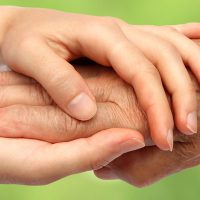Losing Control: Caring For The Elderly And Incontinence
Incontinence is an issue that very few people like to talk about. It is more common than you may think, with over 12 million United States residents suffering from it every day. People of all ages can suffer from the inconvenient and embarrassing condition, but the majority of those who do feel the effects of it are over the age of sixty. It is also much more common in women than it is in men. This is largely owing to the fact that it is the women who have children and thus the muscles that control leakage from the bladder often let them down. If you are planning to or already do care for the elderly then it is an issue that you will have to face sooner rather than later.
Unfortunately, the elderly are at risk of having at least one of the many causes of incontinence. These include, but are not limited to weakened pelvic muscles, urinary tract infections, an enlarged prostate gland in men, diabetes, high calcium levels within the body, a thinning of the vagina wall in women and an inability to move around. Most elderly people have at least one of the above, if not a combination of them and thus they cannot control their urinary functioning.
There are four different type of incontinence, and the elderly may suffer with all four if their pelvic muscles are particularly weak. They are stress, urge, functional and overflow. The pressure put on the bladder by the stomach muscles when laughing or sneezing usually causes stress incontinence. Functional incontiencence occurs when somebody cannot get to the toilet in time but generally has good bladder control. Overflow incontinence predominantly occurs in males with an enlarged prostate, which blocks the urinary tract to the point that bladder actually becomes overly full. All of these occur in the elderly, but the most common form of it is urge incontinence, where the person is not actually given enough warning before they have to go.
Unfortunately, incontinence is not necessarily treatable in the elderly. Younger people who suffer from incontinence can do a series of exercises to strengthen the pelvic muscles or practice bladder control exercises. However, it is unreasonable to expect the elderly to do this. Medication is available to help to stem the problem, especially if the senior in question has a bladder, kidney or urinary tract infection, but it is not advisable for diabetics to take it and it may actually make symptoms worse. It is a natural part of aging and should be accepted as such really.
This doesn’t help you if you are caring for someone who suffers from incontinence. You may well find yourself changing him or her every hour or so, which would also create a sense of embarrassment and discomfort for the individual in question. This also runs the risk of getting pressure sores. However, you can purchase incontinence pad that work much the same as nappies, absorbing moisture and sealing it away from the body. Although it may not feel comfortable to wear them, it may certainly be much better than sitting in wet clothes.
Incontinence is an unfortunate problem for many members of the elderly population because it is a result of the body breaking down. It is just a matter of learning how to cope with it without making the senior you care for feel too embarrassed and ashamed. That is totally dependent on the individual.








